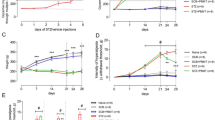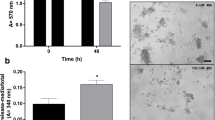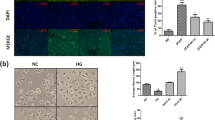Abstract
There is no effective treatment to halt peripheral nervous system damage in diabetic peripheral neuropathy. Mitochondria have been at the center of discussions as important factors in the development of neuropathy in diabetes. Photobiomodulation has been gaining clinical acceptance as it shows beneficial effects on a variety of nervous system disorders. In this study, the effects of photobiomodulation (904 nm, 45 mW, 6.23 J/cm2, 0.13 cm2, 60 ns pulsed time) on mitochondrial dynamics were evaluated in an adult male rat experimental model of streptozotocin-induced type 1 diabetes. Results presented here indicate that photobiomodulation could have an important role in preventing or reversing mitochondrial dynamics dysfunction in the course of peripheral nervous system damage in diabetic peripheral neuropathy. Photobiomodulation showed its effects on modulating the protein expression of mitofusin 2 and dynamin-related protein 1 in the sciatic nerve and in the dorsal root ganglia neurons of streptozotocin-induced type 1 diabetes in rats.





Similar content being viewed by others
Abbreviations
- CTRL:
-
Control
- DRP-1:
-
Dynamin-related protein 1
- DRG:
-
Dorsal root ganglia
- i.p:
-
Intraperitoneal
- MFN-2:
-
Mitofusin-2
- PBM:
-
Photobiomodulation
- SN:
-
Sciatic nerve
- STZ:
-
Streptozotocin
References
Juster-Switlyk, K., & Smith, A. G. (2016). Updates in diabetic peripheral neuropathy. F1000Res 5.
Kharroubi, A. T., & Darwish, H. M. (2015). Diabetes mellitus: the epidemic of the century. World Journal of Diabetes, 6(6), 850–867.
Cho, N. H., et al. (2018). IDF Diabetes Atlas: global estimates of diabetes prevalence for 2017 and projections for 2045. Diabetes Research and Clinical Practice, 138, 271–281.
Zaccardi, F., et al. (2016). Pathophysiology of type 1 and type 2 diabetes mellitus: a 90-year perspective. Postgraduate Medical Journal, 92(1084), 63–69.
Ostenson, C. G. (2001). The pathophysiology of type 2 diabetes mellitus: an overview. Acta Physiologica Scandinavica, 171(3), 241–247.
Forbes, J. M., & Cooper, M. E. (2013). Mechanisms of diabetic complications. Physiological Reviews, 93(1), 137–188.
Selvarajah, D., et al. (2011). Central nervous system involvement in diabetic neuropathy. Current Diabetes Reports, 11(4), 310–322.
Yagihashi, S., Mizukami, H., & Sugimoto, K. (2011). Mechanism of diabetic neuropathy: where are we now and where to go? Journal of Diabetes Investigation, 2(1), 18–32.
Schreiber, A. K., et al. (2015). Diabetic neuropathic pain: physiopathology and treatment. World Journal of Diabetes, 6(3), 432–444.
Tesfaye, S., Boulton, A. J., & Dickenson, A. H. (2013). Mechanisms and management of diabetic painful distal symmetrical polyneuropathy. Diabetes Care, 36(9), 2456–2465.
Iqbal, Z., et al. (2018). Diabetic peripheral neuropathy: epidemiology, diagnosis, and pharmacotherapy. Clinical Therapeutics, 40(6), 828–849.
Callaghan, B. C., et al. (2012). Diabetic neuropathy: clinical manifestations and current treatments. The Lancet. Neurology, 11(6), 521–534.
Brownlee, M. (2005). The pathobiology of diabetic complications: a unifying mechanism. Diabetes, 54(6), 1615–1625.
Fernyhough, P., Huang, T. J., & Verkhratsky, A. (2003). Mechanism of mitochondrial dysfunction in diabetic sensory neuropathy. Journal of the Peripheral Nervous System, 8(4), 227–235.
Fernyhough, P., Roy Chowdhury, S. K., & Schmidt, R. E. (2010). Mitochondrial stress and the pathogenesis of diabetic neuropathy. Expert Review of Endocrinology & Metabolism, 5(1), 39–49.
Suarez-Rivero, J. M., et al. (2017). Mitochondrial dynamics in mitochondrial diseases. Diseases, 5(1), 1. https://doi.org/10.3390/diseases5010001
Amchenkova, A. A., et al. (1988). Coupling membranes as energy-transmitting cables. I. Filamentous mitochondria in fibroblasts and mitochondrial clusters in cardiomyocytes. Journal of Cell Biology, 107(2), 481–495.
Frank, S., et al. (2001). The role of dynamin-related protein 1, a mediator of mitochondrial fission, in apoptosis. Developmental Cell, 1(4), 515–525.
Vantaggiato, C., et al. (2019). The fine tuning of Drp1-dependent mitochondrial remodeling and autophagy controls neuronal differentiation. Frontier Cell Neuroscience, 13, 120.
Fonseca, T. B., et al. (2019). Mitochondrial fission requires DRP1 but not dynamins. Nature, 570(7761), E34–E42.
Chan, D. C. (2012). Fusion and fission: interlinked processes critical for mitochondrial health. Annual Review of Genetics, 46, 265–287.
Ni, H. M., Williams, J. A., & Ding, W. X. (2015). Mitochondrial dynamics and mitochondrial quality control. Redox Biology, 4, 6–13.
Filadi, R., Pendin, D., & Pizzo, P. (2018). Mitofusin 2: from functions to disease. Cell Death & Disease, 9(3), 330.
Chen, K. H., et al. (2014). Role of mitofusin 2 (Mfn2) in controlling cellular proliferation. The FASEB Journal, 28(1), 382–394.
Mourier, A., et al. (2015). Mitofusin 2 is required to maintain mitochondrial coenzyme Q levels. Journal of Cell Biology, 208(4), 429–442.
Chen, H., & Chan, D. C. (2009). Mitochondrial dynamics–fusion, fission, movement, and mitophagy–in neurodegenerative diseases. Human Molecular Genetics, 18(R2), R169–R176.
Xue, R., et al. (2018). Mitofusin2 induces cell autophagy of pancreatic cancer through inhibiting the PI3K/Akt/mTOR signaling pathway. Oxidative Medicine and Cellular Longevity, 2018, 2798070.
Peng, C., et al. (2015). Mitofusin 2 ameliorates hypoxia-induced apoptosis via mitochondrial function and signaling pathways. International Journal of Biochemistry & Cell Biology, 69, 29–40.
Pawlikowska, P., Gajkowska, B., & Orzechowski, A. (2007). Mitofusin 2 (Mfn2): A key player in insulin-dependent myogenesis in vitro. Cell and Tissue Research, 327(3), 571–581.
Cerveny, K. L., et al. (2007). Regulation of mitochondrial fusion and division. Trends in Cell Biology, 17(11), 563–569.
Woo, D. H., et al. (2018). Activation of astrocytic μ-opioid receptor elicits fast glutamate release through TREK-1-containing K2P channel in hippocampal astrocytes. Frontiers in Cellular Neuroscience, 12, 319.
Pareyson, D., et al. (2013). Peripheral neuropathy in mitochondrial disorders. Lancet Neurology, 12(10), 1011–1024.
Chandrasekaran, K., et al. (2019). Role of mitochondria in diabetic peripheral neuropathy: Influencing the NAD(+)-dependent SIRT1-PGC-1alpha-TFAM pathway. International Review of Neurobiology, 145, 177–209.
Dassanayaka, S., et al. (2015). High glucose induces mitochondrial dysfunction independently of protein O-GlcNAcylation. The Biochemical Journal, 467(1), 115–126.
Sifuentes-Franco, S., et al. (2017). The role of oxidative stress, mitochondrial function, and autophagy in diabetic polyneuropathy. Jorunal of Diabetes Research, 2017, 1673081.
Russell, J. W., & Zilliox, L. A. (2014). Diabetic neuropathies. Continuum (Minneap Minn), 20(5 Peripheral Nervous System Disorders), 1226–1240.
Callaghan, B. C., et al. (2012). Enhanced glucose control for preventing and treating diabetic neuropathy. Cochrane Database Systematic Review, 6, CD007543.
Salehpour, F., & Hamblin, M. R. (2020). Photobiomodulation for Parkinson’s disease in animal models: A systematic review. Biomolecules, 10(4), 610.
Kingsley, J. D., Demchak, T., & Mathis, R. (2014). Low-level laser therapy as a treatment for chronic pain. Frontiers in Physiology, 5, 306.
Alves, A. C., et al. (2013). Effect of low-level laser therapy on the expression of inflammatory mediators and on neutrophils and macrophages in acute joint inflammation. Arthritis Research & Therapy, 15(5), R116.
Song, S., Zhou, F., & Chen, W. R. (2012). Low-level laser therapy regulates microglial function through Src-mediated signaling pathways: implications for neurodegenerative diseases. Journal of Neuroinflammation, 9, 219.
Kajagar, B. M., et al. (2012). Efficacy of low level laser therapy on wound healing in patients with chronic diabetic foot ulcers-a randomised control trial. Indian Journal of Surgery, 74(5), 359–363.
Song, H. J., et al. (2018). Effectiveness of high-intensity laser therapy in the treatment of musculoskeletal disorders: a systematic review and meta-analysis of randomized controlled trials. Medicine (Baltimore), 97(51), e13126.
Salehpour, F., et al. (2017). Transcranial low-level laser therapy improves brain mitochondrial function and cognitive impairment in D-galactose-induced aging mice. Neurobiology of Aging, 58, 140–150.
de Freitas, L. F., & Hamblin, M. R. (2016). Proposed mechanisms of photobiomodulation or low-level light therapy. IEEE Journal of Selected Topics in Quantum Electronics, 22(3), 7000417. https://doi.org/10.1109/JSTQE.2016.2561201
Souza, N. H., et al. (2014). Effect of low-level laser therapy on the modulation of the mitochondrial activity of macrophages. Brazilian Journal of Physical Therapy, 18(4), 308–314.
Chung, H., et al. (2012). The nuts and bolts of low-level laser (light) therapy. Annals of Biomedical Engineering, 40(2), 516–533.
Hamblin, M. R. (2016). Shining light on the head: photobiomodulation for brain disorders. BBA Clinical, 6, 113–124.
Martins, D. O., et al. (2017). Neuropeptide expression and morphometric differences in crushed alveolar inferior nerve of rats: effects of photobiomodulation. Lasers in Medical Science, 32(4), 833–840.
Oliveira, M. E., et al. (2017). Low level laser therapy alters satellite glial cell expression and reverses nociceptive behavior in rats with neuropathic pain. Photochemical & Photobiological Sciences, 16(4), 547–554.
Rocha, I. R., et al. (2017). Photobiostimulation reverses allodynia and peripheral nerve damage in streptozotocin-induced type 1 diabetes. Lasers in Medical Science, 32(3), 495–501.
Wang, R., et al. (2019). Photobiomodulation for global cerebral ischemia: targeting mitochondrial dynamics and functions. Molecular Neurobiology, 56(3), 1852–1869.
Tatmatsu-Rocha, J. C., et al. (2018). Mitochondrial dynamics (fission and fusion) and collagen production in a rat model of diabetic wound healing treated by photobiomodulation: Comparison of 904 nm laser and 850nm light-emitting diode (LED). Journal of Photochemistry and Photobiology B: Biology, 187, 41–47.
Bradford, M. M. (1976). A rapid and sensitive method for the quantitation of microgram quantities of protein utilizing the principle of protein-dye binding. Analytical Biochemistry, 72, 248–254.
Miller, A. J., Roman, B., & Norstrom, E. M. (2016). Protein electrophoretic migration data from custom and commercial gradient gels. Data Brief, 9, 1–3.
Wu, J., & Yan, L. J. (2015). Streptozotocin-induced type 1 diabetes in rodents as a model for studying mitochondrial mechanisms of diabetic beta cell glucotoxicity. Diabetes, Metabolic Syndrome and Obesity: Targets and Therapy, 8, 181–188.
Eleazu, C. O., et al. (2013). Review of the mechanism of cell death resulting from streptozotocin challenge in experimental animals, its practical use and potential risk to humans. Journal of Diabetes Metabolic Disorders, 12(1), 60.
American Diabetes, A. (2009). Diagnosis and classification of diabetes mellitus. Diabetes Care, 32(Suppl 1), S62–S67.
Davidson, E., et al. (2009). The roles of streptozotocin neurotoxicity and neutral endopeptidase in murine experimental diabetic neuropathy. Experimental Diabetes Research, 2009, 431980.
Campos, C. (2012). Chronic hyperglycemia and glucose toxicity: pathology and clinical sequelae. Postgraduate Medicine, 124(6), 90–97.
Schmeichel, A. M., Schmelzer, J. D., & Low, P. A. (2003). Oxidative injury and apoptosis of dorsal root ganglion neurons in chronic experimental diabetic neuropathy. Diabetes, 52(1), 165–171.
Vincent, A. M., et al. (2010). Mitochondrial biogenesis and fission in axons in cell culture and animal models of diabetic neuropathy. Acta Neuropathologica, 120(4), 477–489.
Kumari, S., et al. (2012). Hyperglycemia alters mitochondrial fission and fusion proteins in mice subjected to cerebral ischemia and reperfusion. Translational Stroke Research, 3(2), 296–304.
Farivar, S., Malekshahabi, T., & Shiari, R. (2014). Biological effects of low level laser therapy. Journal of Lasers in Medical Sciences, 5(2), 58–62.
de la Torre, J. C. (2017). Treating cognitive impairment with transcranial low level laser therapy. Journal of Photochemistry and Photobiology B: Biology, 168, 149–155.
Hamblin, M. R. (2017). Mechanisms and applications of the anti-inflammatory effects of photobiomodulation. AIMS Biophysics, 4(3), 337–361.
Lu, Y., et al. (2017). Low-level laser therapy for beta amyloid toxicity in rat hippocampus. Neurobiology of Aging, 49, 165–182.
Acknowledgements
Funding for this work was generously provided by Sao Paulo Research Foundation—FAPESP (grant number 2017/25,554–0; 2017/05,218–5).
Author information
Authors and Affiliations
Corresponding author
Ethics declarations
Conflict of interest
The authors declare that they have no conflict of interest.
Ethical approval
All procedures of the study were conducted in accordance with the ethical guidelines set by Institutional Animal Care Committee of the University of Sao Paulo. Protocol number 123/2015. The funding agency plays no role in the design of the study, data collection, analysis, interpretation of the data, or in writing the manuscript.
Rights and permissions
About this article
Cite this article
Rocha, I.R.C., Perez-Reyes, E. & Chacur, M. Effect of photobiomodulation on mitochondrial dynamics in peripheral nervous system in streptozotocin-induced type 1 diabetes in rats. Photochem Photobiol Sci 20, 293–301 (2021). https://doi.org/10.1007/s43630-021-00018-w
Received:
Accepted:
Published:
Issue Date:
DOI: https://doi.org/10.1007/s43630-021-00018-w




